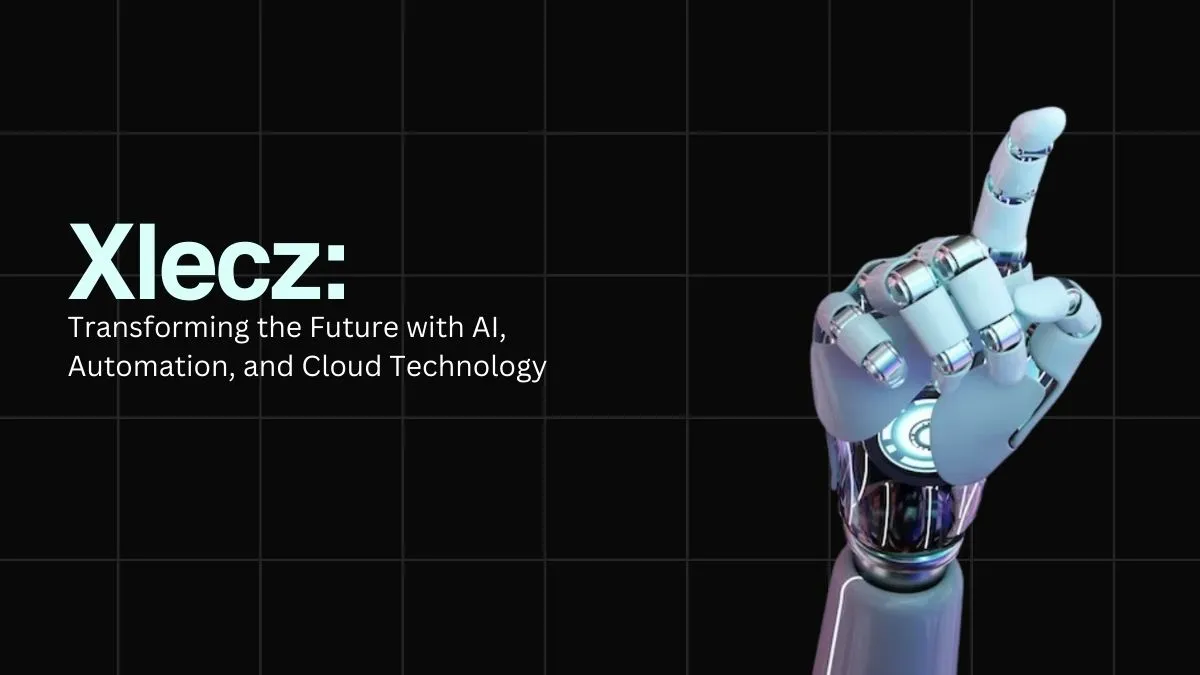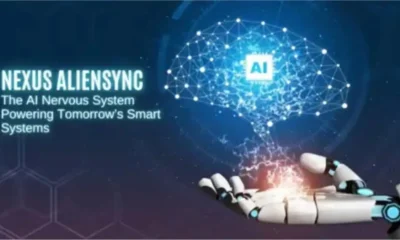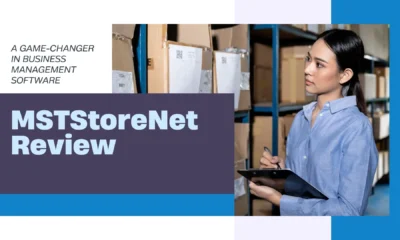AI
Xlecz: Transforming the Future with AI, Automation, and Cloud Technology

Xlecz is an AI-powered platform that provides automated operational intelligence and safe cloud solutions. The system extends its capabilities to handle users ranging from single entrepreneurs to worldwide corporate organizations. Xlecz combines cloud computing abilities with data analytics while integrating machine learning to deliver a single digital workspace, improving work coordination and reducing workflow complications while guarding sensitive information. It provides functional tools that assist predictive financial modeling and manufacturing process automation. Xlecz delivers action-driven insights and operational efficiency to users while giving them a competitive advantage within the digital economy.
Key Features of the Xlecz Platform
- Real-Time Analytics: Xlecz collects and processes data instantly, allowing users to gain insights and make decisions without delay.
- Customizable Workflows: Users can tailor automation rules, dashboards, and reports to match their unique operational needs.
- Cloud Accessibility: The platform supports remote work with secure, always-on access to data and applications from any device.
- Advanced Security: End-to-end encryption, two-factor authentication, and compliance with data protection laws such as GDPR ensure user trust.
How Xlecz Uses AI to Optimize Workflows
The primary operation foundation that enables Xlecz’s workflow optimization belongs to artificial intelligence. The platform implements machine learning algorithms that study usage patterns to produce outcome forecasts and identify proper process improvement choices. Historical data processing enables it to project delays, which leads to recommended resource management changes. This platform applies natural language processing (NLP) technology for automatic system responses and query routing to the proper departments in its customer support functions. These AI functionalities decrease operational delays and minimize staff involvement, enabling organizations to maintain operational efficiency. Xlecz learns user behavior data trends continuously to maintain its adaptive and effective automation strategies..
Cloud Computing Capabilities of Xlecz
Xlecz bases its operations on cloud technology, which provides scalability, flexibility, and cost-efficiency benefits. This platform enables users to store their data in the cloud and host their applications, and integrate their systems within this environment in one place. Users benefit from auto-updated services as well as duplicated data capabilities and non-stop system deployment. Organizations benefit from cloud architecture by being able to adjust their capabilities according to usage since they do not need to invest in excess hardware or software. Besides, cloud-native tools provide remote teams with better productivity, together with improved teamwork through their real-time collaboration features and version control functionality.
Xlecz Automation Tools: Redefining Efficiency

- Task Scheduling and Execution: Automates repetitive tasks, reducing manual labor and improving accuracy.
- Smart Triggers: Initiates workflows based on real-time events, such as a new sales inquiry or system alert.
- Integrated Communication: Sends automatic updates, reminders, and alerts to relevant stakeholders across platforms.
- Cross-Platform Compatibility: Connects with CRM, ERP, and productivity tools like Slack, Microsoft Teams, and Trello.
Industry Applications of Xlecz
This platform functions effectively in a broad array of business sectors. Healthcare practitioners utilize Xlecz to automate scheduling operations while managing electronic medical documents, along with generating treatment performance assessments. Finance benefits from Xlecz by using it for fraud prevention, financial modeling, and real-time reporting operations. Educational organizations adopt this platform to conduct automated paperwork and monitor student grades, and provide digital learning improvements through its use in retail operations. This platform enables better inventory control and behavioral analysis of customers, together with individualized marketing approaches. Xlecz demonstrates its capacity to respond effortlessly and effectively to various operational difficulties in every implementation..
Security and Data Privacy on Xlecz
This platform is based on data security because it is essential in today’s interconnected digital world. The platform implements encryption standards suitable for military use, secure cloud infrastructure components, and a system of user access privileges to protect data confidentiality. It delivers international regulation compliance, including GDPR, HIPAA, and ISO/IEC 27001, which enables users from all sectors to keep their data practices ethical and lawful. The platform performs security audits regularly and has anomaly detection systems and incident response procedures. This platform provides businesses with trusted protection against risks by implementing these security measures, which create high levels of trust regarding the secure handling of critical information..
Customization and Integration Options
- API-First Architecture: Enables seamless integration with third-party apps and services.
- Drag-and-Drop Builders: Allow users to create dashboards, reports, and workflows without needing coding skills.
- Modular Design: Offers plug-and-play features that can be activated based on user requirements.
- Data Connectors: Integrates easily with databases, cloud services, and external APIs for real-time data syncing.
Benefits for Businesses and Individuals
Xlecz delivers operational, financial, and strategic advantages to its users. Modern businesses achieve better decision-making speed, together with maximum productivity rates, while lowering their operational costs via automated solutions. Businesses of all sizes use this platform because it enables both independent workers to track their tasks and manage performance, and enables enterprises to link departments together for integrated operations. The decrease of manual work generates fewer mistakes alongside improved regulatory compliance, which produces happier customers. It helps users achieve quantifiable financial returns as it equips them to maintain their edge in accelerating digital settings.
Xlecz vs. Other AI Platforms
Xlecz distinguishes itself in the AI platform market because it provides a simple yet powerful foundation compared to Microsoft Azure AI, IBM Watson, and Google Cloud AI. The system, this platform provides accessible functions along with modular capabilities to clients who face challenges with big-tech platforms’ enterprise-focused pricing schemes and complex learning curves. The platform suits small and medium enterprises due to its simple interface, flexible customization system, and features that are easily integrated. Though this platform provides unified toolkit capabilities of AI, cloud, and automation, it puts diverse solutions in one package that eliminates subscriptions and multiple tool usage. An all-in-one system design provides both a better user experience and more economical operation.
Getting Started with Xlecz
Xlecz is simple and easy to use. Users can sign up for a free trial, explore a guided setup, and begin integrating tools with minimal configuration. The platform provides extensive documentation, live support, and video tutorials to assist at every stage. Pricing plans are flexible, with options for individuals, SMBs, and large enterprises. Advanced packages include dedicated account managers, premium support, and additional customization features. It offers strategic consulting and implementation services for businesses new to digital transformation to ensure a successful rollout.
Conclusion
Xlecz’s future strategy involves maintaining leadership in technological innovation. Xlecz technology aims to enhance its capabilities by developing additional generative AI functionalities and no-code application building with advanced robotic process automation (RPA) features. This platform dedicates resources to create features for sustainability through its cloud efficiency monitoring and carbon tracking capabilities. It is ideal for growing businesses across sectors that need smart, secure, scalable solutions. As it evolves to suit current trends and responds to user needs, this platform establishes itself as more than a tool but a digital partner, transforming industries for the future.
-

 BIOGRAPHY7 months ago
BIOGRAPHY7 months agoBehind the Scenes with Sandra Orlow: An Exclusive Interview
-

 HOME1 year ago
HOME1 year agoDiscovering Insights: A Deep Dive into the //vital-mag.net blog
-

 HOME1 year ago
HOME1 year agoSifangds in Action: Real-Life Applications and Success Stories
-

 BIOGRAPHY1 year ago
BIOGRAPHY1 year agoThe Woman Behind the Comedian: Meet Andrew Santino Wife




























